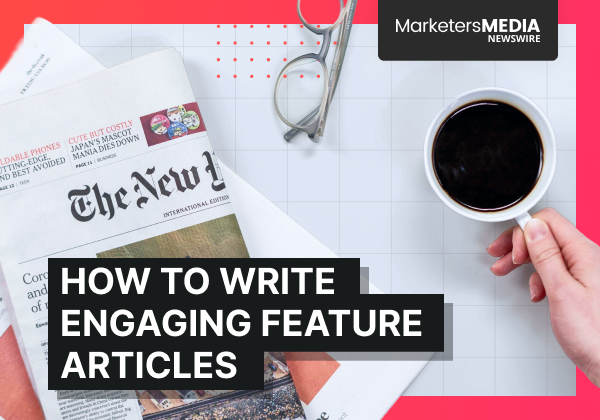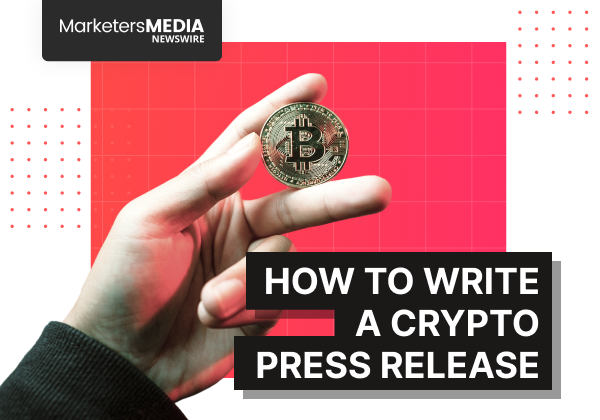Table of Content
Feature articles aren't going anywhere.
Despite what you might hear about shrinking attention spans and the dominance of short-form content, quality long-form journalism continues to attract significant reader engagement.
The difference between success and failure isn't about length—it's about quality and execution.
When a feature story successfully hooks the reader, attention is maintained regardless of word count.
The challenge is managing that initial "consideration span"—those critical first seconds when someone decides whether to keep reading or click away.
What Makes a Feature Article Different from News?
A feature article is fundamentally different from a standard news report in three key ways: length and depth, structure, and tone.
#1 Length matters
News stories typically run between 30 to 400 words, focusing on immediate facts.
Feature articles stretch from 1,000 to 4,000 words or more, providing the space needed for background information, context, and multiple perspectives.
#2 Structure tells the story
Hard news follows the inverted pyramid—most important information first.
Features use narrative techniques borrowed from storytelling: scene-setting hooks, plot development, and literary devices like chronological storytelling or flashbacks.
#3 Tone sets the mood
News reports maintain objectivity and cover time-sensitive current events.
Features allow subjective, entertaining prose with emotional appeal. The subject usually isn't time-sensitive. Instead, features analyze the significance of events rather than merely reporting them.
Four Types of Feature Articles (And Why They Work)
#1 Profiles
These features examine a specific individual's life, work, or experiences. They focus on character, motivations, and impact using narrative-driven structure with biographical information, detailed anecdotes, and extensive quotes.
Think of profiles as providing intimate access to someone's world—showing readers not just what the person does, but who they are.
#2 Human Interest Stories
These pieces highlight compelling, often emotional, experiences of ordinary people. They succeed by making direct emotional appeals and tapping into universal aspects of human nature—personal struggles, extraordinary accomplishments, or transformative experiences.
The key here is finding the universal in the specific. One person's story becomes everyone's story.
#3 Trend Stories
Trend features identify and analyze current or emerging societal or industry trends. They require a blend of data, expert opinions, and real-world examples while exploring both causes and consequences.
These work best when they move beyond surface-level observation to explain why a trend matters and where it's heading.
#4 Explanatory Features (Explainers)
Explainers break down complex topics, processes, or issues for general audiences. Success depends on clear language, accessible analogies, and engaging presentation—often enhanced with visual aids.
When quantum computing or AI ethics needs to be understood by non-experts, explainers do the heavy lifting.
Feature Article Examples: Learning from Award-Winning Work
The continuous search for "best feature articles" and "Pulitzer Prize feature writing examples" reveals something important: writers and publishers want to understand what defines exceptional journalism.
Award-winning features share common elements: extraordinary reporting, meticulous crafting, and creative execution.
Eli Saslow's work on contemporary American issues demonstrates how deep investigative pieces can explore profound societal challenges with both sensitivity and impact.
Elizabeth Bruenig's series on botched executions showed the ultimate power of feature journalism—her reporting led to a temporary moratorium on the death penalty in Alabama. That's not just journalism. That's change.
Classic narrative nonfiction continues to serve as foundational education for writers.
Works like Truman Capote's "In Cold Blood," Jon Krakauer's "Into Thin Air," and Gay Talese's "Frank Sinatra Has a Cold" remain essential reading.
These pieces blend factual reporting with literary style, sophisticated structure, and compelling conflict.
How to Write a Feature Article That Holds Attention
Start with a Strong Lede
Your feature lede must be a "natural extension of the story," capturing the relevant mood and tone.
One highly effective technique uses a key character as the "big shiny red door" into your story. Establish an attention-grabbing anecdote that grounds the larger theme.
Use scene-setting and descriptive language to establish atmosphere, contrasting sharply with the straightforward facts of a hard news lede.
Follow with the Nut Graf
The nut graf (or "nut graph") serves as your story's thesis. It appears early in the feature but typically after you've set the scene.
Think of it as both a summary and a movie trailer—clearly stating the central subject, the main tension, and foreshadowing compelling moments readers will encounter.
Without a clear nut graf, readers get lost. They won't know why they're reading or where you're taking them.
Use Anecdotes Strategically
Anecdotes make concepts relatable, evoke emotion, and personalize your narrative.
Effective anecdotes borrow techniques from fiction: establish a main character, define a challenge, use dialogue, create conflict and tension.
Always clarify whether your anecdote is true or hypothetical. Focus on "showing, not telling" the emotional or physical state of characters.
Maintain Consistent Tone
Tone is the emotional quality conveyed through your writing style. It sets the atmosphere for the entire story.
The appropriate tone depends on your subject matter and audience expectations. Serious topics require formality. Lighthearted content permits humor.
Once you establish tone, maintain it consistently through vocabulary and sentence structure.
Successful publishers understand the need for controlled nuance—being "smart, but not arrogant" or "clever, but not patronizing."
Keep Narrative Focus
A common struggle in long-form writing is maintaining focus. Experienced editors recommend developing a private "because" statement—a single, focused sentence capturing the essence of your story.
For example: "Person X is doing Y because of Z."
This internal compass prevents narrative drift, ensuring your story maintains coherence around its most important person, action, and motivation.
What Topics Are Pulling Traffic Now
Technology and Ethics
AI technology, including multimodal AI and proactive AI agents, dominates search interest. The complexity makes these topics perfect for explanatory features that break down intricate processes and ethical consequences.
Geopolitics and Media Infrastructure
Major global conflicts and political events generate significant demand. Successful features move past combat reports to focus on human and political consequences—like the unprecedented dangers faced by journalists covering conflict.
Systemic Social Justice
Issues requiring long-form exploration include racial disparities in criminal justice and healthcare, and feminist issues like the gender pay gap and reproductive rights.
These topics attract strong demand because they require the multi-perspective, contextual depth that only substantial word counts can provide.
Hard news reports the latest legislative change. Features explain root causes and long-term significance.
Evergreen Content Strategies for Sustained Traffic
To stabilize content investment against trend volatility, focus on evergreen topics that provide long-term value:
Common mistakes and lessons learned in specific niches provide perpetual value. These formats often use personal narrative approaches ("lessons I learned") to share stories while providing actionable advice.
Expert profiles and life hacks appeal to universal reader interests in self-improvement and efficiency, generating steady traffic without frequent updates.
Process and methodology breakdowns like "How I built," "behind the scenes," and detailed workflow explanations generate steady traffic because they provide replicable frameworks rather than time-sensitive information.
The key distinction: evergreen features teach skills and frameworks that remain relevant, while timely features analyze specific events that will eventually need updates.
Wrapping It Up
Feature articles demand more—time, research, and craft. That investment pays off when approached strategically.
If you’re starting out, study successful features in your field. Break down structure, tone, and ledes. Practice turning the same news topic into multiple narrative openings. The skill lies in shaping angles, not just reporting facts.
As you advance, aim for specialization. Markets reward domain expertise paired with strong storytelling. A fintech writer who clarifies blockchain, a healthcare professional who makes research accessible, or a tech analyst who humanizes AI ethics will always out-earn a generalist.
Before committing to a topic, apply three checks:
- Depth: If 400 words is enough, it isn’t a feature.
- Staying power: Will it matter in six months?
- Perspective: Does it demand multiple angles?
The feature article market isn't shrinking—it's becoming more sophisticated. Readers crave depth, nuance, and space to explore significance rather than just consume facts.
Write pieces that showcase expertise, solve real problems, and respect attention. Done well, a feature keeps working for you long after publication through search visibility, shares, and credibility.
That’s the difference between content consumed and content remembered.
Frequently Asked Questions (FAQ)
Q: What is the most crucial piece of advice for writing a "winning" pitch to a human editor?
A: The most crucial element of a successful pitch is that it must sell a story, not a topic, and it must be highly personalized. Pitches must also demonstrate familiarity with the editor's beat and the publication's unique voice and angle. For example, covering a broad subject requires framing it with a specific, urgent angle (e.g., focusing on "institutional racism and classism" rather than just a general event).
Q: How is the tone of a feature article different from a news report?
A: A news report requires a straightforward, objective tone focused on facts. A feature article, conversely, allows for a more subjective, entertaining tone with emotional appeal. The tone in a feature is crucial as it sets the atmosphere for the entire story and must be consistently maintained through vocabulary and sentence structure.
Q: What is the "Nut Graf" and why is it essential for long-form feature articles?
A: The Nut Graf (or "nut graph") is the story's thesis statement. It appears early in the feature—typically after a scene-setting narrative hook (lede)— and is essential for preventing reader confusion.
It serves as both a summary and a "movie trailer," clearly stating the central subject, the main tension, and foreshadowing the compelling moments readers will encounter in the rest of the text.
Q: How can I maintain narrative focus and prevent "drift" when writing a feature that is thousands of words long?
A: A key obstacle for professional writers is maintaining narrative focus in long projects. Experienced editors recommend developing a private "because" statement—a single, focused sentence that captures the essence of the story's core conflict.
Q: What is the key difference between a Profile and a Human Interest story?
A: A Profile feature examines a specific individual's life, work, or experiences, focusing on their character, motivations, and impact. A Human Interest Story highlights the compelling, often emotional, experiences of ordinary people, succeeding by making a direct emotional appeal and tapping into universal human themes like struggle or accomplishment.
Free Press Release Template
Tell us where to send your PDF:








